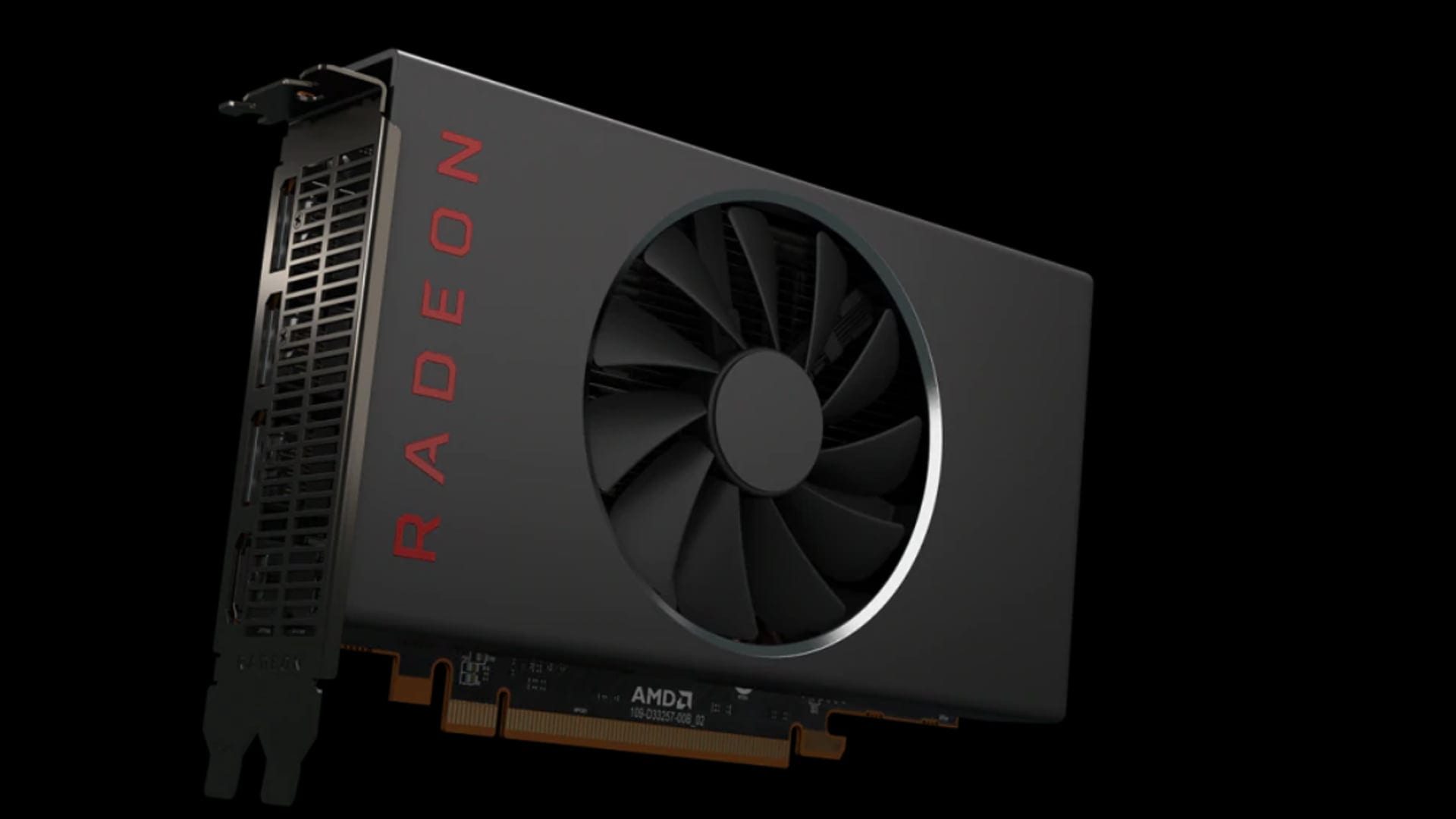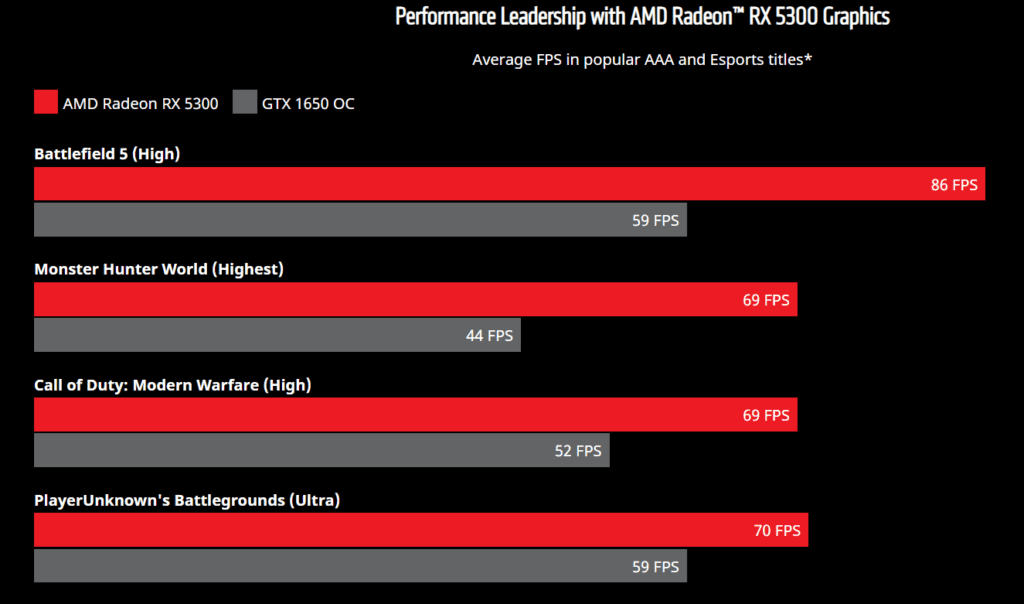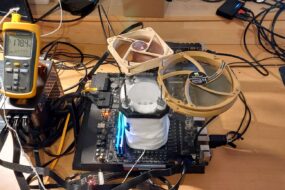
Given the imminent announcement of NVIDIA’s RTX 3000 graphics cards, AMD should be focusing on its next series of products, the RX 6000, and its top-of-the-line “Big Navi” chip. However, apparently, the “red” giant has a completely different opinion:
AMD yesterday unveiled the Radeon RX 5300, an entry-level product for budget gaming systems.
AMD Radeon RX 5300 is built on the Navi 14 graphics processor. By the way, this is the same GPU that is used in the Radeon RX 5500 XT line of video cards and physically it consists of the same 22 execution units or 1408 stream processors. The main difference between the RX 5300 and the RX 5500 lies in the GPU clock speed and video memory configuration.
The graphics processor Radeon RX 5300 has a “game clock” of 1448 MHz and a “maximum clock” of 1645 MHz. Which is less than that of the GPU RX 5500 XT by 18% and 12%, respectively.
In addition, the Radeon RX 5300 video card is equipped with a smaller 3GB video memory versus 4GB for the RX 5500. Accordingly, the memory bus of the RX 5300 is also narrower: only 96-bit, which, thanks to the use of GDDR6 video memory, provides a bandwidth of 168GB/s.
With regard to the power consumption indicators of the Radeon RX 5300, this parameter for the new product at its peak should be only 100 W, which, by the way, is 30 W lower than, for example, in the RX 5500 XT. To connect additional power, the card requires only one 8-pin connector from the power supply.
A table with the specifications of the line of AMD Radeon RX 5000 “RDNA” graphics cards:
| Video card | Radeon RX 5700 XT | Radeon RX 5700 | Radeon RX 5600 XT | Radeon RX 5500 XT | Radeon RX 5300 |
|---|---|---|---|---|---|
| GPU architecture | 7nm Navi (RDNA 1st Gen) | 7nm Navi (RDNA 1st Gen) | 7nm Navi (RDNA 1st Gen) | 7nm Navi (RDNA 1st Gen) | 7nm Navi (RDNA 1st Gen) |
| Stream Processors | 2560 SPs | 2304 SPs | 2304 SPs | 1408 SPs | 1408 SPs |
| TMUs / ROPs | 160 / 64 | 144 / 64 | 144 / 64 | 88 / 32 | 88 / 32 |
| Base frequency | 1605 MHz | 1465 MHz | 1130 MHz | 1670 MHz | TBD |
| Maximum frequency | 1905 MHz | 1725 MHz | 1560 MHz | 1845 MHz | 1645 MHz |
| Game frequency | 1755 MHz | 1625 MHz | 1375 MHz | 1717 MHz | 1448 MHz |
| Computing power | 9.75 TFLOPs | 7.95 TFLOPs | 7.19 TFLOPs | 5.19 TFLOPs | 4.63 TFLOPs |
| Video memory size | 8 GB GDDR6 | 8 GB GDDR6 | 6 GB GDDR6 | 8 GB GDDR6 4 GB GDDR6 | 3 GB GDDR6 |
| Memory bus | 256-bit | 256-bit | 192-bit | 128-bit | 96-bit |
| Bandwidth | 448 GB/s | 448 GB/s | 288 GB/s | 224 GB/s | 168 GB/s |
| Energy consumption | 225W | 180W | 150W | 130W | 100W |
| Price | $399 US | $349 US | $279 US | $169 US (4 GB) $199 US (8 GB) | $129 US? |
| Release date | July 7, 2019 | July 7, 2019 | January 21, 2020 | October 7, 2019 | 28 August 2020 |
Performance RX 5300:

AMD itself believes that the Radeon RX 5300 falls into the entry-level segment for comfortable gaming at 1080p. And according to internal AMD testing, in the popular shooter Battlefield 5, the Radeon RX 5300 graphics card outperforms the NVIDIA GeForce GTX 1650 card by an impressive 45%.
But here we should take into account the fact that NVIDIA has already replaced the usual GeForce GTX 1650 with the GTX 1650 “SUPER” version, which has a similar price and much higher performance. So AMD’s internal testing can hardly be called objective.
The price, or the date of the start of sales of the RX 5300 video card, is still unknown, but given that the Radeon RX 5500 XT (4GB) variant costs $ 169, the Radeon RX 5300 should cost significantly less than $ 150.





